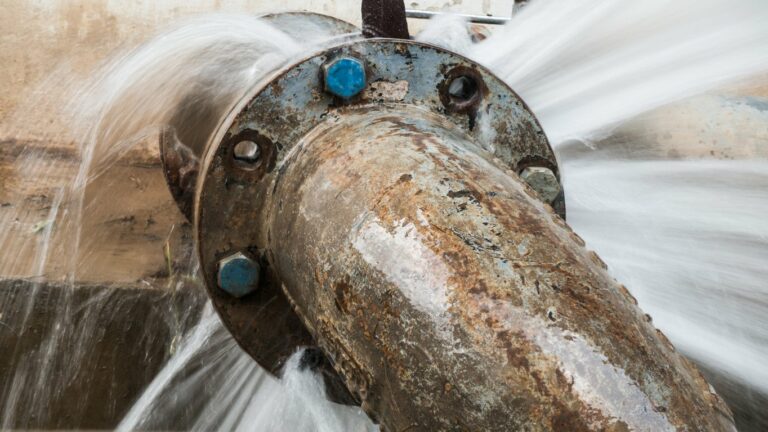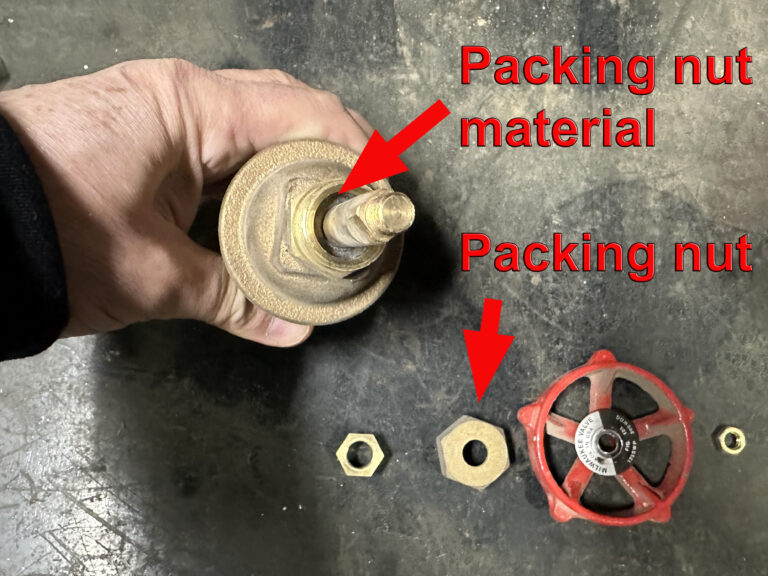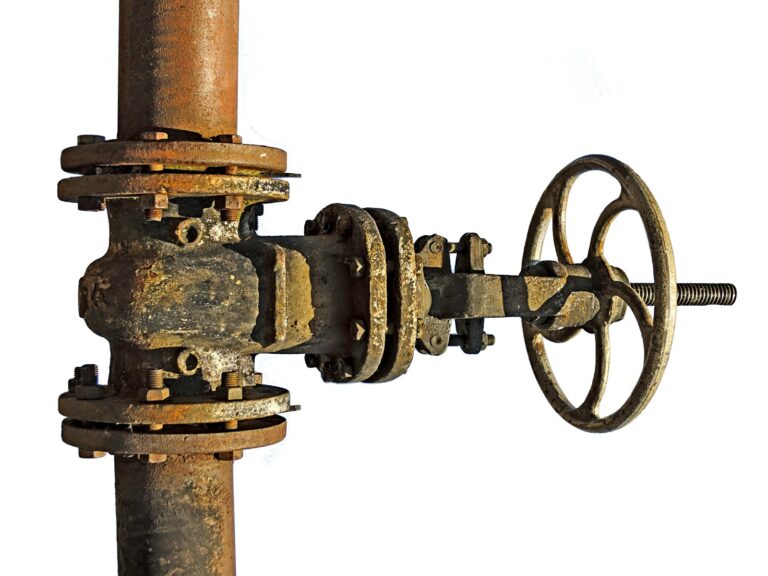When it comes to your home, you want to make sure that everything is running smoothly. This includes having proper water pressure and volume of water coming through your taps and showers. One of the ways you can ensure this is by understanding the different factors that affect what you may refer to as water pressure.
Your actual ability to use your plumbing properly is determined by both water pressure (psi), and the volume of water delivered to each of your plumbing fixture outlets. You require both the required water pressure and water volume each fixture is designed for. Otherwise your plumbing fixtures and outlets will not function as designed.
Many folks do not understand the vast difference between the concept of volume vs. the concept of length. Meaning, in terms of length 1″ is double the length of 1/2″. However, in terms of the volume inside of a pipe a 1″ pipe, it is 4x the volume of a 1/2″ pipe. In this blog post, we will talk about the water supply system and water volume including what Volume Flow Rate (GPM ~ gallons per minute) is and why it’s important. We will also discuss different pipe sizes and how they influence the volume of water that services your plumbing.
How to Calculate the Volume of Water
When it comes to understanding the volume of water in pipes, there are a few things you need to know. For example, the number .785 (pi/4) converts the area of a square into the area of a circle. This is the area inside a water pipe. Multiplying that area by the length of the pipe will give you the volume of the pipe.
So, to calculate the volume of water that a pipe can hold, we need to know two things: The inside diameter of the pipe (D) and the length of the pipe (L). The volume (V) of water in a pipe is calculated using the following formula: V = pi x radius² x length. We actually list a clear and less technical example just below.
Some folks get confused that the size of the pipe is different from the length. These two factors are indeed different, and factor in differently in terms of volume of water. For instance and as stated previously, it takes four ½” pipes to equal the volume of water in 1″ pipe. This is since the area of a circle grows exponentially as the diameter increases.
An Example In Understanding Volume Of Water Inside A Pipe
- 1/2″ pipe: .5″ (length) x .5″ (width) = .25″ x .785 = .196” area inside the 1/2″ pipe
- 1″ pipe: 1″ (length) x 1″ (width) = 1″ x .785 = .785″ area inside the 1″ pipe.
- 196″ (the area inside a 1/2″ pipe) x 4 = .785″ (the area inside a 1″ pipe)
The above illustrates why it takes four 1/2″ pipes to equal how much water just one 1″ pipe can carry.
How One Size Difference Affects the Volume Of Water
A seemingly small size difference in a pipe size can make a dramatic difference in water volume. For example, a 1 ¼” pipe carries 55% more water than a 1″ pipe. This is something for homeowners to keep in mind when they’re looking to cut costs. Even in today’s market of inflated material costs, the cost difference between 1″ and 1 1/4″ pipe is about $1.70 per foot. On a complete water service line replacement that amounts to around $100.00. For the typical water service line replacement in NYC that amounts to a little more than 1% of the job cost.
When you add the factor of the length of the run of pipe, the size of the pipe will still cause a huge difference in the volume of water flowing out. For instance, a 60-inch-long pipe with a 1″ diameter will typically provide 8 gallons of water per minute. Meanwhile, a pipe that is 1 1/4″ and has the same length will provide 14 gallons of water per minute. This is a 75% increase in water in the second case compared to the first case. Simply proving that with an increase in pipe size, so does likewise the volume of water in the pipe increase. This is based upon the NYC DEP sizing table.
Other Factors That Affect the Volume of Water in the Pipe:
The Length of the Run Of Pipe
According to the NYC sizing table, and simple commonsense, the shorter the length of the run of pipe, the more water it can provide. That is because as water flows through a pipe, the inner wall of the pipe applies resistance to the flow of the water. For instance, if you have a 50′ long pipe that is 1″, you’ll typically get 9 gallons per minute. If you use a 100′ long pipe that is 1″ in size, you will notice a decrease of water volume to 6 gallons per minute. In this case, doubling the length lessens the volume of water by 33.3%. This means that as you increase the length of the pipe while holding its diameter constant, you’re decreasing the volume of water flowing out of your pipes majorly due to a decreased flow rate.
Blocked Connections or Water Lines
An unclogged pipe will hold more water than a clogged pipe. When you have clogged or coated pipes, they will have a reduced diameter. This in turn reduces the water they can carry and deliver. And that is when most homeowners start complaining about water pressure problems. Mineral build-up, blocked plumbing fittings, or inadequate pipe size can all affect the volume of water passing through.
To ensure your pipes are carrying the required volume of water, aim to keep the pipes clean and clear of anything that can clog them. It’s best to consult with a professional to get an accurate assessment of your home’s water piping. In almost all cases it’s best avoid using galvanized pipe as your water supply. Galvanized pipe tends to interact with water and corrode and rust.
What is Volume Flow Rate and Why it’s Important
The volume flow rate is the amount of water that flows through a pipe per unit of time. It is measured in gallons per minute (GPM). The higher the volume flow rate, the more water can move through the pipe in a given time. Your home’s plumbing fixtures are designed to function properly based upon water pressure and gallons per minute requirements. As an example, when you add plumbing fixtures you may overload your existing plumbing’s capabilities. You may have to increase the size of certain water pipes to still provide the proper volume of water.
Why is This Important?
- Having someone flush a toilet and dramatically change the water volume and temperature in your shower is a quality of life issue. This is not how your plumbing was originally designed to function; it is not normal.
- Not being able to use multiple plumbing fixtures in your home at the same time is likewise not normal, and correctable.
If you have a garden hose and want to fill a swimming pool, you’ll need the proper water pressure and gpm to do so in a reasonable amount of time.
FYI: You can calculate the flow rate of your hose by dividing the total volume of water (in gallons) by the time it takes to fill a 5 gallon pail.
It’s important to note that the flow rate will vary depending on the diameter of the hose, the length of the hose, and the water pressure. These factors can all affect the volume of water that flows through the hose in a given time.
Tips for Homeowners:
As a homeowner, knowing the capacity that different pipe sizes can carry is important in understanding how your plumbing works. There are a few things you can do to ensure that your pipes are carrying the right amount of water. First, make sure that you know the diameter of your pipes. Second, be aware of the length of your pipes. Third, check to see if you have clogged pipes. All this will make a difference in the amount of water you receive in your taps and showers. Even with all this checking, it will take a professional plumber to understand the water demands of each of your plumbing fixtures.
Need Help? Call a Licensed Plumber to Fix Your Water Volume Issues
At Balkan Sewer and Water Main Service, we are always here to help. We’re trained and experienced in dealing with all sorts of plumbing issues. We can quickly diagnose the problem and have it fixed, so you can go back to using your pipes without worry. Hiring professionals like us can help you prevent future problems by maintaining your pipes and keeping them up to standard. This will save you time, money, and hassle in the long run.
If you have any questions about your water volume, water line replacement, or your plumbing in general, don’t hesitate to contact us. We will be happy to help you.






